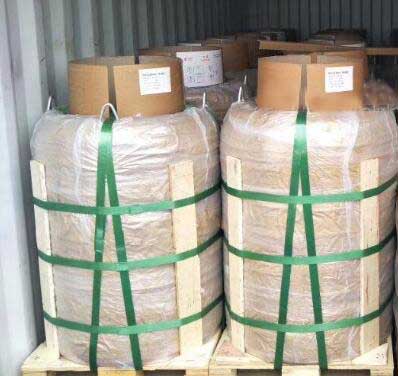e7018 welding electrode
Understanding the E7018 Welding Electrode Properties, Applications, and Techniques
Welding is an essential process in various industries, ranging from construction and manufacturing to automotive and aerospace. One of the key components in arc welding is the welding electrode, which plays a critical role in forming the weld metal. Among the many types of electrodes available, the E7018 is widely recognized for its excellent properties and versatility. This article will explore the characteristics, applications, and techniques associated with the E7018 welding electrode.
What is the E7018 Welding Electrode?
The E7018 welding electrode is an arc welding rod classified according to the American Welding Society (AWS) specification. The designation E7018 can be broken down into key components
- E This letter indicates that it is an electrode used in arc welding. - 70 This number identifies the minimum tensile strength of the weld metal in thousands of psi. In this case, the E7018 electrode has a minimum tensile strength of 70,000 psi. - 1 This number represents the weld metal's position, which indicates the electrode's versatility in being used in various positions (flat, horizontal, vertical, and overhead). - 8 This number suggests that the electrode has low hydrogen content, making it suitable for welding high-strength steels and other applications where hydrogen-induced cracking could be a concern.
Properties of E7018
The E7018 electrode is known for its outstanding mechanical properties, including
- Low Hydrogen Content The low hydrogen content helps prevent cracks in welds, which is especially important when working with high-strength materials and to avoid hydrogen embrittlement. - Excellent toughness E7018 welds exhibit excellent toughness, providing the ability to withstand harsh conditions, including low temperatures. - Good ductility The electrode produces welds that can stretch and deform without breaking, which is crucial in many structural applications. - High resistance to cracking This property is essential for maintaining weld integrity in critical applications.
These characteristics make the E7018 electrode particularly popular in high-stress applications, such as pressure vessels, bridges, and structural steel work.
Applications of E7018
Due to its remarkable properties, the E7018 welding electrode is used in various applications, including
2. Pressure Vessel Construction The low hydrogen content of E7018 makes it ideal for welding pressure vessels, which must withstand high pressures without failing.
e7018 welding electrode

3. Pipeline Welding When working with pipelines, especially those involving oil, gas, or water, E7018 is often preferred to ensure the integrity of the welds under pressure.
4. Shipbuilding and Repair The marine industry requires welding that can endure harsh environments; thus, E7018 electrodes are frequently utilized in shipbuilding and repairs.
5. Heavy Equipment Manufacturing In the fabrication of heavy machinery and equipment, the strong and resilient welds created using E7018 ensure durability and longevity.
Welding Techniques and Best Practices
To achieve optimal results with the E7018 welding electrode, certain techniques and best practices should be followed
- Preheat the Base Material Depending on the base material and its thickness, preheating can be beneficial to reduce the risk of cracking, particularly in high-strength steels.
- Maintain an Appropriate Arc Length A short arc length is recommended with E7018 electrodes to ensure good penetration and minimize spatter.
- Control Welding Parameters It is crucial to select the correct amperage and voltage according to the electrode diameter and application to achieve the best weld quality.
- Keep Electrodes Dry E7018 electrodes should be stored in a dry environment, as moisture can increase the hydrogen content and lead to cracking in the weld.
- Use Proper Technique Employing a stringer bead technique rather than weaving can help minimize hydrogen pickup in the weld bead.
Conclusion
The E7018 welding electrode is an invaluable resource in the welding industry due to its impressive properties and versatility. With applications ranging from structural steel fabrication to pressure vessel construction, the E7018 is essential for achieving strong, durable, and resilient welds. By following proper techniques and understanding its characteristics, welders can utilize the E7018 electrode to its fullest potential, ensuring the integrity and longevity of their projects.
-
E7018 Welding Rods: Premium Low Hydrogen ElectrodesNewsAug.04,2025
-
High-Strength Cast Iron Welding Electrode AWS ENi-ClNewsAug.03,2025
-
E6011 Welding Rod | All-Position AC/DC ElectrodesNewsAug.02,2025
-
J422 Welding Rod: Durable Electrodes for Strong WeldsNewsAug.01,2025
-
AWS E7024 Arc Welding Electrodes: High-Efficiency & Easy UseNewsJul.31,2025
-
AWS E7018 Welding Rod: Low Hydrogen ElectrodesNewsJul.31,2025


